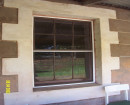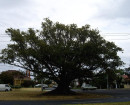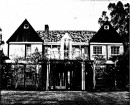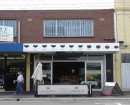HAYTERS SHEEP DIP AND STOCK YARDS, CANNUM
HARDERS ROAD CANNUM, YARRIAMBIACK SHIRE
-
Add to tour
You must log in to do that.
-
Share
-
Shortlist place
You must log in to do that.
- Download report
Statement of Significance
-
-
HAYTERS SHEEP DIP AND STOCK YARDS, CANNUM - History
SiteCard data copied on 02/04/2025:The site is located within Crown Allotment (CA) 19, Parish of Cannum, which was first purchased outright from the Crown by George Phillip Hayter in 1884 (DCLS, 1877; DLS, 1916). However, a review of historic records indicates that Hayter was likely occupying CA 19 under licence from the Crown by 1877 as land selected under Section 20 of the Land Act 1869 (DLS, 1877; Hamilton Speculator, 02 Oct. 1877, p. 3; Map 3). Under this Act a three year occupation licence could be issued for surveyed land; if improvements could be demonstrated to have occurred at the end of this term, the selector had the right to apply for a seven year lease or to purchase the land outright (Nelson & Alves, 2009). George Hayter and his wife Angelina (nee Lewis) originally immigrated to Australia from England in the 1850s before settling in the Cannum/Warracknabeal area in c.1875, reportedly living in a tent for some time on their arrival to the district (The Ballarat Star, 24 Feb. 1923, 10; Hamilton Speculator 29, Mar. 1876, p. 2; Horsham Times, 28 Sep, 1937, p. 2). George and one of his sons, Frederick, would go on to purchase additional allotments of land south and east of CA 19 during the late-nineteenth and early-twentieth century, consolidating their holdings into a single farming property. By the early-twentieth century Frederick appears to have been managing allotments purchased by himself and his father as a mixed-used farm combining: grazing – sheep and small numbers of cattle, cropping (wheat), and a small scale orange orchard (Horsham Times, 18 Jan 1907, p. 1, 25 Jan 1907, p. 1 & 03 Jul 1931, p. 2 ; Weekly Times, 15 Oct 1921, p. 25). Ownership of CA 19 was formally transferred from George to Frederick in 1912 (SOV, 1883 & 1899). Given that the architectural materials evidenced in the sheep dip and stock yards (i.e., hand-pressed bricks, hand cut timbers and rose head (wire) nails) are suggestive of a pre-c.1900 construction date, it is likely that the sheep dip and yard (identified at the site) were constructed by the Hayter family and were in operation by the early-twentieth century (see Section 2.2 for additional details). Frederick Hayter sold the property (encompassing CA 19) to Alfred Stanley Rodda in 1939. Rodda was a local farmer who had established farm elsewhere in the Warracknabeal/Horsham area prior to purchasing the Hayter farm. Members of the Rodda family retained ownership of the property until 1979, and appear to have primarily focused on wheat cropping activities during this period (The Farmer and Settler, 21 Sep. 1951, p. 14; SOV 1884, 1899 & 1977). In an aerial image dating to 1946, the location of the sheep dip is evident with two standing structures: one larger rectangular structure (southeast of the sheep dip, likely a shearing shed) and a second smaller shed/building (west of the sheep dip, likely the draining/dripping pen). While it is possible that the ‘shearing shed’ (and less likely the sheep dip and yards) were built by the Rodda family after their 1939 purchase, the buildings material and construction method evident at the site (as discussed above), and the fact that the Hayter family were known to have been grazing sheep on the farm during their ownership period, suggests that the evidenced complex of farm structures associated with sheep management were constructed by the Hayter family. A preliminary review of aerial imagery indicates that the large shed (presumed shearing shed) was extant as a standing structure until the 1960s (see Map 6), and was demolished/removed prior to 2003 (Google Earth Pro, 2025). Land encompassing the footprint of the sheep dip, stock yard and former shearing shed does not appear to have been subject to significant ploughing activity; i.e., the site does not appear to have undergone significant ground disturbance during the period c.1946 to present (Google Earth Pro, 2025). A north-south oriented farm access track located to the immediate east of the nominated site extent appears to have been mechanically graded relatively recently, but is evident in aerial imagery from c.2003 (Google Earth Pro, 2025). [Maps and additional details of source material referenced above are included in the submitted site card supporting document (Dolling & Crotty, 2025a)].HAYTERS SHEEP DIP AND STOCK YARDS, CANNUM - Interpretation of Site
The site encompasses an extant (partially preserved) circular ‘ring’ type sheep dip and stock yards, and the location of a former farm shed associated with this sheep dip. Land encompassing the footprint of the sheep dip, stock yard and former shearing shed does not appear to have been subject to significant ploughing activity; i.e., the site does not appear to have undergone significant ground disturbance during the period c.1946 to present. Any preserved archaeological features and/or deposits have the potential to be associated with the c.1877 to 1939 occupation of the land by George Hayter and his family, who were amongst the earliest European settlers in the Cannum region. Additional details are provided in the submitted supporting document (Dolling & Crotty, 2025a).
Heritage Inventory Description
HAYTERS SHEEP DIP AND STOCK YARDS, CANNUM - Heritage Inventory Description
The site encompasses the location of an extant (partially preserved) circular ‘ring’ type brick sheep dip, an adjacent timber floor/platform (likely a dripping/drying pen), and an associated stock yard area (evidenced by extant fence posts). The site also encompasses: the footprint of a former farm shed (likely shearing shed) identified from 1940s aerial imagery; and an area of land surrounding the above structures/former structures where there is potential for associated archaeological deposits and/or features dating from the nineteenth to early-twentieth century to be preserved. Historic research suggests that the sheep dip, associated farm building/s and stock yards were likely built by members of the Hayter family during the late-nineteenth or early-twentieth century. [Photographs and a site plan are included in the submitted site card supporting document (Dolling & Crotty, 2025)].
-
-
-
-
-
RULES OF THE MELBOURNE FOOTBALL CLUB
 Victorian Heritage Register H2428
Victorian Heritage Register H2428 -
NORTH MELBOURNE POTTERY
 Victorian Heritage Inventory
Victorian Heritage Inventory -
STONY CREEK SLIPWAY
 Victorian Heritage Inventory
Victorian Heritage Inventory
-
-







